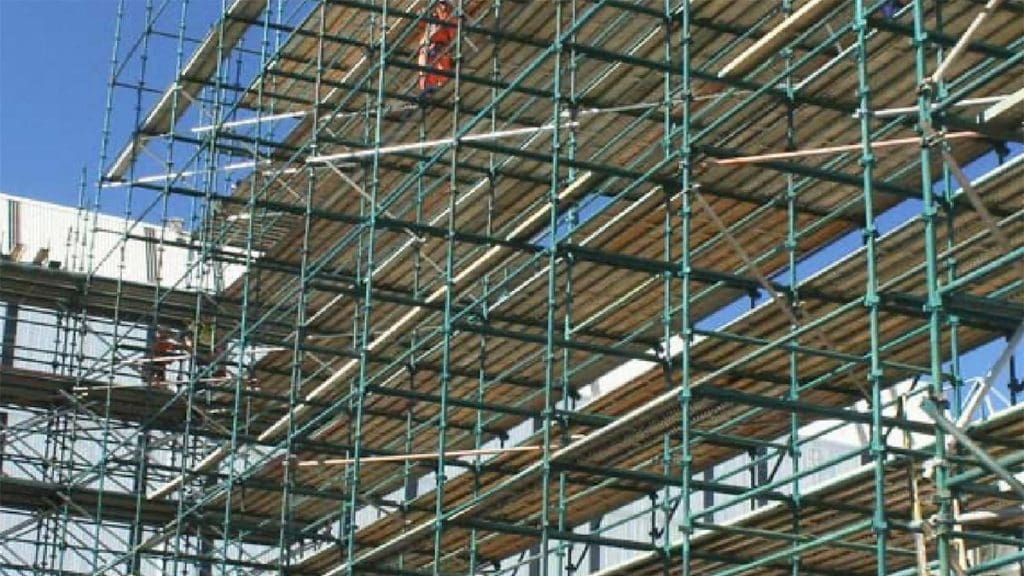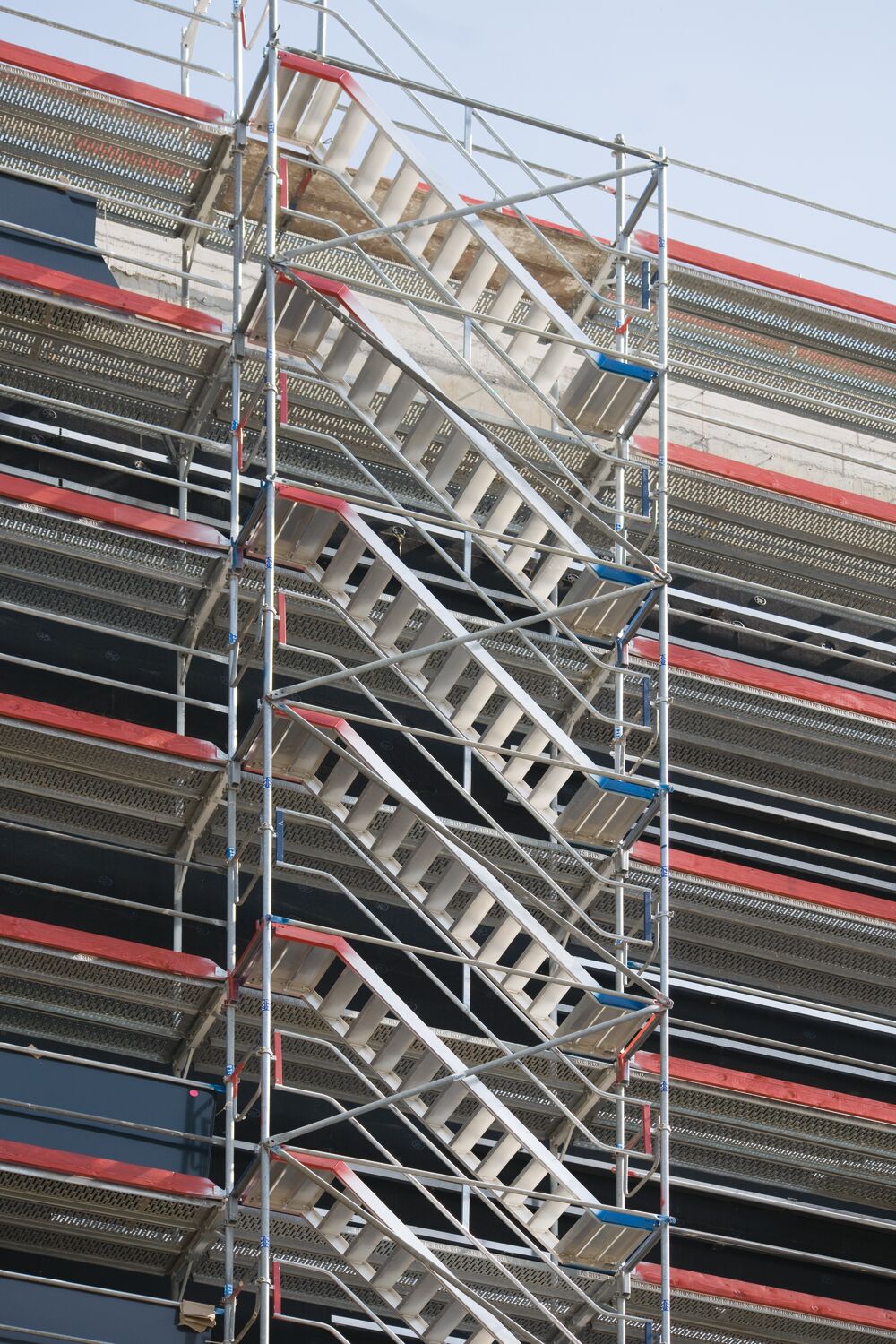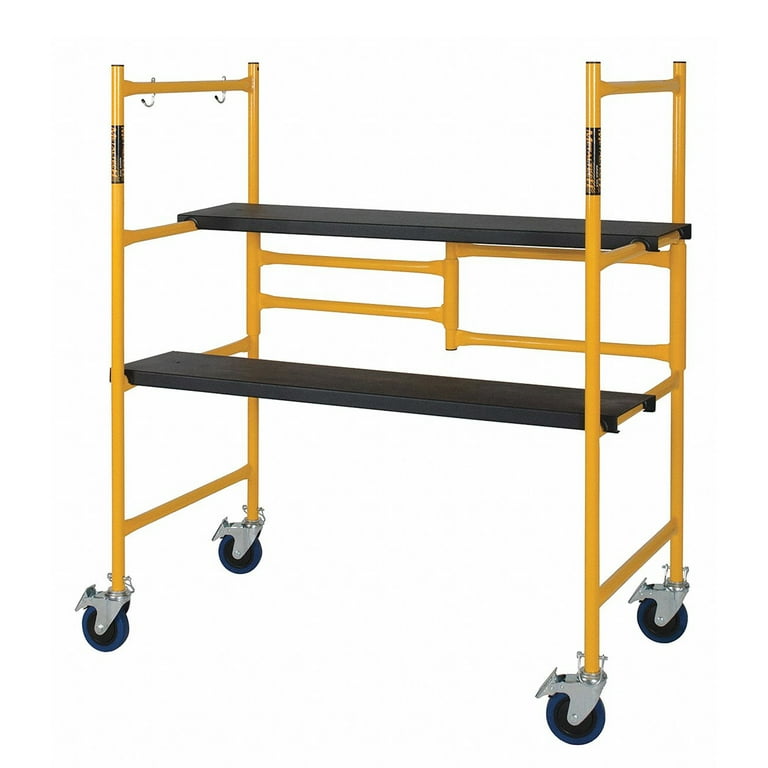Top-Notch Scaffolding Near Me: Expert Solutions for Every Job
Top-Notch Scaffolding Near Me: Expert Solutions for Every Job
Blog Article
Discovering the Numerous Sorts Of Scaffolding Made Use Of in Construction Projects
The building and construction market relies greatly on different types of scaffolding to meet details job requirements, each offering distinctive benefits and applications. Standard frame scaffolding gives a tough structure for general jobs, while suspended scaffolding is important for job on high-rise structures.

Standard Framework Scaffolding
Standard framework scaffolding is one of one of the most commonly used methods in the building market because of its effectiveness and convenience. This system contains upright and horizontal frameworks that are put together to develop a secure system for employees and materials. The major elements include vertical posts, horizontal ledgers, and diagonal braces, which with each other provide a solid framework that can support considerable tons.
One of the vital advantages of typical structure scaffolding is its adaptability to different building jobs, ranging from property buildings to big commercial structures. The modular design permits simple setting up and disassembly, making it reliable for both temporary and long-term projects. Furthermore, the system can be tailored in height and width, suiting different building styles and website problems.
Security is paramount in scaffolding applications, and standard frame systems are geared up with guardrails and toe boards to stop falls and make certain worker protection. Routine examinations and adherence to safety regulations are important in keeping the integrity of the scaffold (Scaffolding). Generally, conventional frame scaffolding continues to be an essential option in the construction market, providing a reliable platform for labor and boosting overall job performance

Suspended Scaffolding
Suspended scaffolding supplies an unique service for building jobs that call for accessibility to elevated surfaces, specifically in scenarios where traditional frame scaffolding might be impractical. This kind of scaffolding is typically put on hold from the roof covering or upper levels of a structure, utilizing a system of sheaves, systems, and ropes to produce a functioning area that can be adjusted to numerous heights.
One of the primary benefits of suspended scaffolding is its adaptability. It can be conveniently rearranged or lowered to suit modifications in construction demands, making it suitable for tasks such as window installment, façade work, and upkeep on skyscrapers. In addition, the marginal footprint of put on hold scaffolding permits better usage of ground area in city atmospheres, where room is commonly limited.
Security is a crucial consideration in making use of suspended scaffolding. Correct rigging and anchoring systems have to be employed to guarantee security and prevent crashes. Operators needs to also be educated in the risk-free usage of this devices. In general, suspended scaffolding gives a efficient and effective solution for accessing hard-to-reach locations in numerous construction situations, improving both efficiency and security on site.
System Scaffolding
System scaffolding, frequently considered a contemporary option in the scaffolding market, contains pre-engineered components that can be rapidly assembled and adapted for different building and construction projects. Scaffolding. This kind of scaffolding is identified by its modular layout, which enables for convenience and performance on work websites, suiting architectural demands and different elevations
Typically made from high-strength steel or aluminum, system scaffolding offers improved longevity and security. The elements include vertical messages, straight ledgers, and angled braces, which adjoin securely, making certain a robust framework. The layout commonly integrates standard installations, simplifying assembly and disassembly procedures, therefore lowering labor time and expenses.

Rolling Scaffolding
Rolling scaffolding is a flexible option to typical fixed scaffolding, developed for wheelchair and ease of use on building and construction sites. This type of scaffolding includes a platform supported by structures with wheels, enabling employees to conveniently move it as required. The mobility function official source dramatically improves productivity, as it reduces downtime related to dismantling and setting up dealt with scaffolding.
Typically created from lightweight products such as light weight aluminum or steel, rolling scaffolding uses a tough yet mobile remedy for jobs needing frequent repositioning - Scaffolding. It is particularly advantageous in jobs such as paint, drywall setup, and electrical job, where access to various heights and areas is necessary
Safety is critical in rolling scaffolding style, with functions such as locking wheels to stop unexpected activity when being used, and guardrails to shield workers from falls. In addition, several models are flexible in height, suiting different job needs.
Cantilever Scaffolding

The style of cantilever scaffolding typically includes making use of arms or brackets anchored to a building or structure, allowing the system to prolong exterior securely. Security is extremely important; hence, these scaffolds need to be crafted to endure environmental problems and various tons. Routine inspection and maintenance are necessary to make sure architectural stability and employee security.
Cantilever scaffolding is favored for its flexibility and efficient use of area, making it a prominent selection in urban settings where space restraints prevail. Furthermore, it helps with easier accessibility to high elevations, ultimately adding to the total performance of construction jobs. Just like all scaffolding types, appropriate training and adherence to security criteria are critical for employees making use of their explanation cantilever scaffolding.
Verdict
Standard frame scaffolding supplies stability, while put on hold scaffolding supplies flexibility for raised jobs. System scaffolding promotes fast assembly, and rolling scaffolding enhances wheelchair for differing job atmospheres.
Traditional frame scaffolding offers right here a durable foundation for basic tasks, while suspended scaffolding is crucial for job on skyscraper frameworks.Moving scaffolding is a versatile option to conventional set scaffolding, developed for wheelchair and ease of usage on construction websites. As with all scaffolding kinds, appropriate training and adherence to safety requirements are important for workers making use of cantilever scaffolding.
Traditional structure scaffolding offers security, while suspended scaffolding supplies flexibility for elevated jobs. System scaffolding assists in fast assembly, and rolling scaffolding improves movement for varying job environments.
Report this page